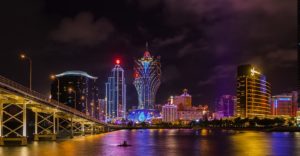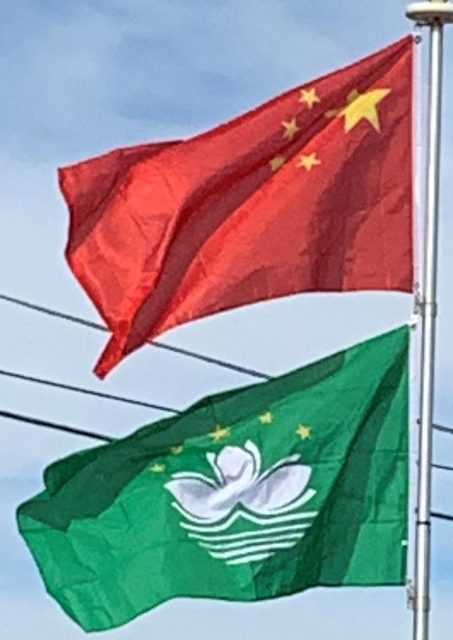Cotai, the area of reclaimed land connecting Taipa and Coloane, contains many of the newer casinos and resorts established after 1999. The region’s jurisdiction over the surrounding sea was greatly expanded in 2015, when it was granted an additional 85 km2 (33 sq mi) of maritime territory by the State Council. Further reclamation is currently underway to develop parts of the Macau New Urban Zone. The territory also has control over part of an artificial island to maintain a border checkpoint for the Hong Kong–Zhuhai–Macau Bridge.
Economy:
Macau has a capitalist service economy largely based on casino gaming and tourism. It is the world’s 83rd-largest economy, with a nominal GDP of approximately MOP433 billion (US$53.9 billion). Although Macau has one of the highest per capita GDPs, the territory also has a high level of wealth disparity. Macau’s gaming industry is the largest in the world, generating over MOP195 billion (US$24 billion) in revenue and about seven times larger than that of Las Vegas.
The regional economy is heavily reliant on casino gaming. The vast majority of government funding (79.6 per cent of total tax revenue) comes from gaming. Gambling as a share of GDP peaked in 2013 at over 60 per cent, and continues to account for 49.1 per cent of total economic output. The vast majority of casino patrons are tourists from mainland China, making up 68 per cent of all visitors. Casino gaming is illegal in both the mainland and Hong Kong, giving Macau a legal monopoly on the industry in China.
Casino gambling was legalised in 1962 and the gaming industry initially operated under a government-licensed monopoly granted to the Sociedade de Turismo e Diversões de Macau. This license was renegotiated and renewed several times before ending in 2002 after 40 years. The government then allowed open bidding for casino licenses to attract foreign investors. Along with an easing of travel restrictions on mainland Chinese visitors, this triggered a period of rapid economic growth; from 1999 to 2016, Macau’s gross domestic product multiplied by 7 and the unemployment rate dropped from 6.3 to 1.9 per cent. The Sands Macao, Wynn Macau, MGM Macau, and Venetian Macau were all opened during the first decade after liberalization of casino concessions. Casinos employ about 24 per cent of the total workforce in the region.

Export-oriented manufacturing previously contributed to a much larger share of economic output, peaking at 36.9 per cent of GDP in 1985 and falling to less than 1 per cent in 2017. The bulk of these exports were cotton textiles and apparel, but also included toys and electronics. At the transfer of sovereignty in 1999, manufacturing, financial services, construction and real estate, and gaming were the four largest sectors of the economy. Macau’s shift to an economic model entirely dependent on gaming caused concern over its overexposure to a single sector, prompting the regional government to attempt re-diversifying its economy.
The government traditionally had a non-interventionist role in the economy and taxes corporations at very low rates. Post-handover administrations have generally been more involved in enhancing social welfare to counter the cyclical nature of the gaming industry. Economic growth has been attributed in large part to the high number of mainlander visits to Macau, and the central government exercises a role in guiding casino business growth through its control of the flow of tourists. The Closer Economic Partnership Arrangement formalized a policy of free trade between Macau and mainland China, with each jurisdiction pledging to remove remaining obstacles to trade and cross-boundary investment.
